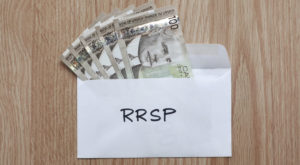 How to beat the March 1st RRSP deadline without having to come up with new money is the subject of my latest MoneySense Retired Money column. You can access it by clicking on the highlighted headline: How to ‘find’ cash for your RRSP contribution.
How to beat the March 1st RRSP deadline without having to come up with new money is the subject of my latest MoneySense Retired Money column. You can access it by clicking on the highlighted headline: How to ‘find’ cash for your RRSP contribution.
As with the previous column involving doing the same thing for TFSAs, this involves a tricky procedure known as “transfers-in-kind,” which means you need some investments in your non-registered portfolio to pull it off. There can be tax pitfalls so you need to find investments that haven’t greatly appreciated in value, or find offsetting losers without falling afoul of the CRA’s superficial loss rules.
Seniors in particular likely have a good amount of money sitting in “open” or non-registered investment accounts, which means any securities can be “transferred in kind” to your RRSP, thereby generating the required receipt to generate a tax refund come tax filing time in April.
You don’t have to be a senior of course: any Canadian of any age can transfer-in-kind securities from their open accounts to their RRSPs; it’s just that many younger folks may not have a lot of money housed in non-registered accounts. Most tend to maximize the RRSP first and since 2009, the TFSA.
But beware the RRSP that gets “too big”
Of course, the kind of pre-retirees who read this column may want to consider whether their RRSP might become “too big” and eventually put you in a higher tax bracket once you start to RRIF after age 71. I looked at this “nice problem to have” in an FP column last May.





